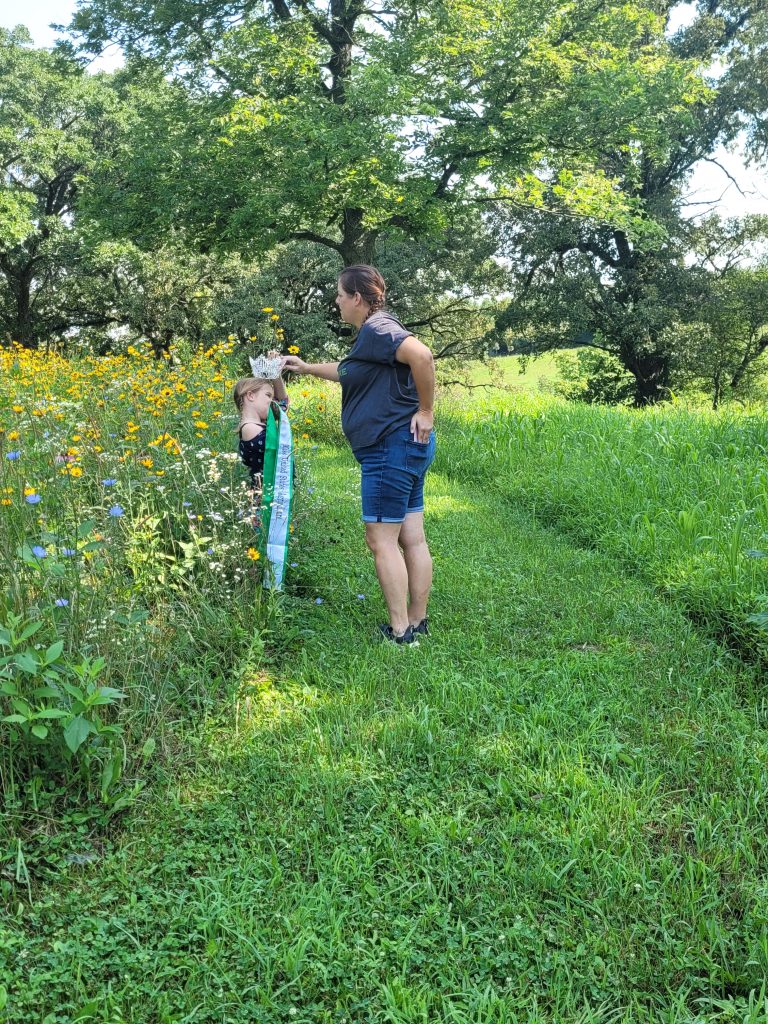
Wildlife habitat enhancement is a family affair for Al DeCrane on his farm in Galva, IL , which includes pollinator plots, three large ponds, and over 20 acres of trees, including white pine and a few different varieties of oak (red, white, black, and bur). Describing his family’s involvement on the farm, he said, “Both of my grandkids deer hunt, so we have gotten to hunt deer every year… We’re having a lot of fun, and it’s exposing them. They helped me plant the trees, help me prune them.” His wife also grows wildflowers and keeps honeybees.
Working with NRCS, his conservation plans included cool season grasses, warm season grasses, wildlife food plots, and a riparian buffer, along with hardwood tree plantings, which he described as his favorite. He said, “Before you plant the trees, they wanted a bluegrass established, a Kentucky bluegrass. And that did help in some areas with the weed control.” Other grasses that he has planted include big blue stem, little blue stem, and Indian grass.
While he welcomes the deer on his property, they did cause some initial damage to the trees. Originally, he planted 5,000 white pine and 5,000 oaks trees and did not have tubes or cages around them. He contacted his former Illinois Department of Natural Resources (IDNR) District Forester Steve Felt, who taught him how to coppice the trees, and he started putting tubes around some after that. Describing the process, Al said, “cut it off about two inches at
the bottom between the first of March and the 15th of April. Steve said those trees will grow about 5 ft in the first year because they have their base already established. So, I did that, and by golly—by the end of the year, every tree had grown up out of the tubes.” He
added that he has cut back on the number of trees that he will plant at a time now—only planting 50 or 100 at once and putting tubes around all of them. He planted his trees in f ive different areas on the farm, focusing on hillsides to stop erosion. He was able to get approximately 75% of the cost of his trees covered through state and county programs.
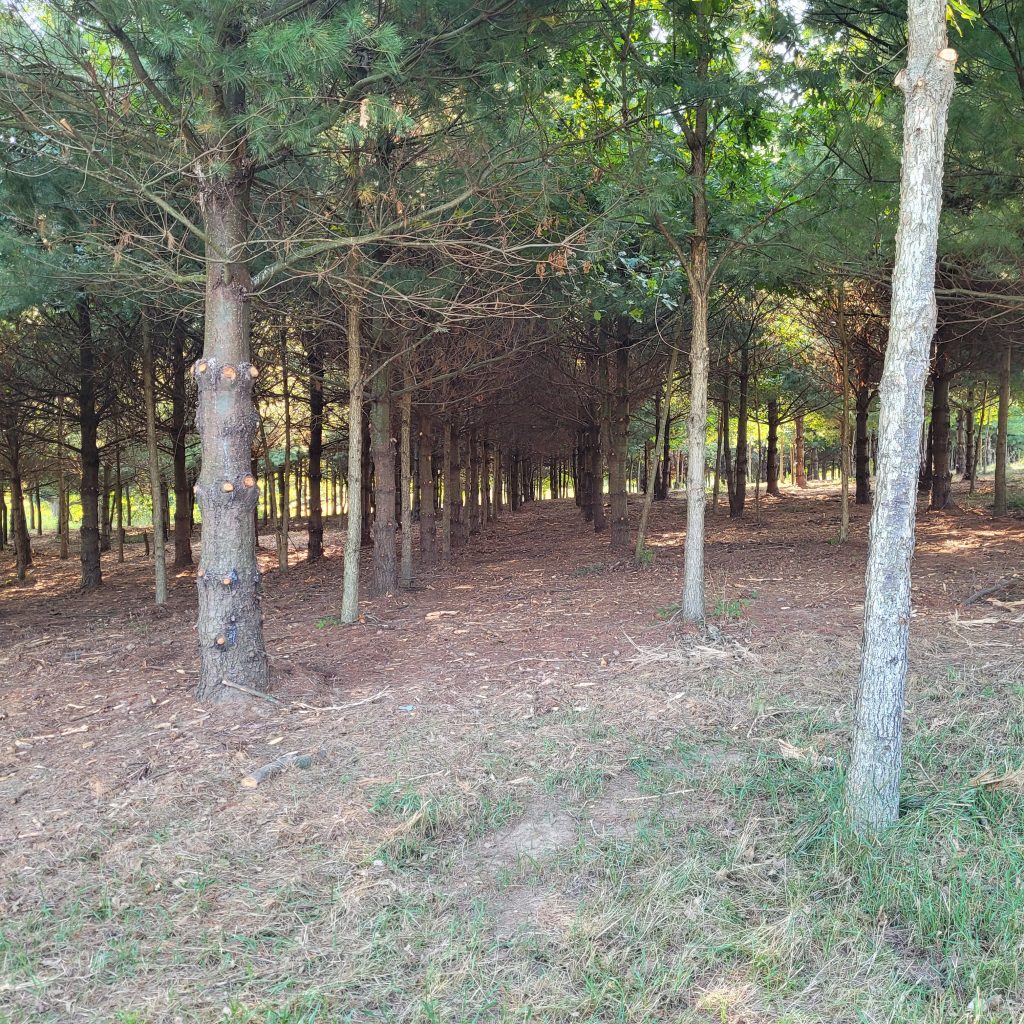
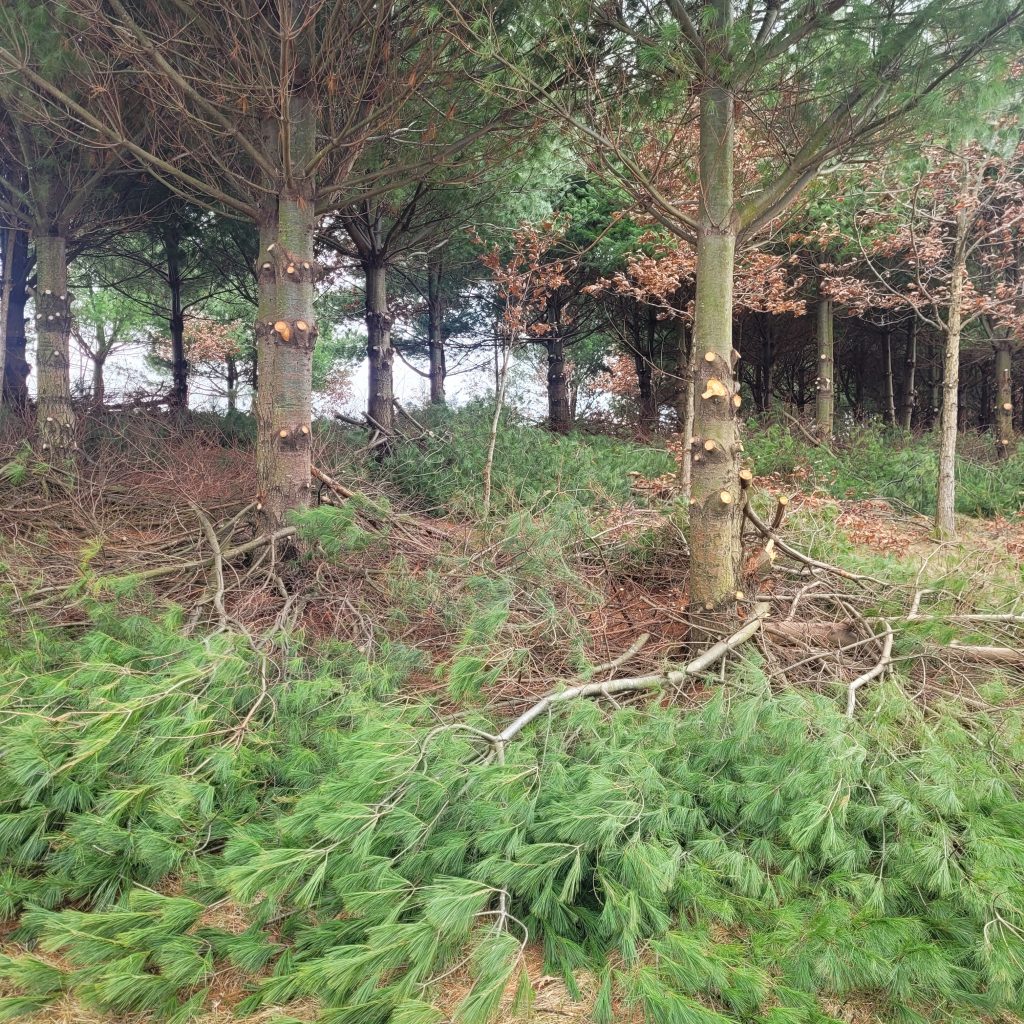
His wildlife food plots include corn, beans, sorghum, sunflowers, and wheat, along with turnips and radishes for the deer in the winter. He said, “ There’s so much corn and beans around. The deer pretty much have a smorgasbord in this area. But after everybody gets their crops out, then they start hitting my food plots. I have what they call destination food plots. So, when the weather gets bad, the deer come and eat.” Al has also created brush piles along
the edges of his timber to provide more nesting areas for wildlife.
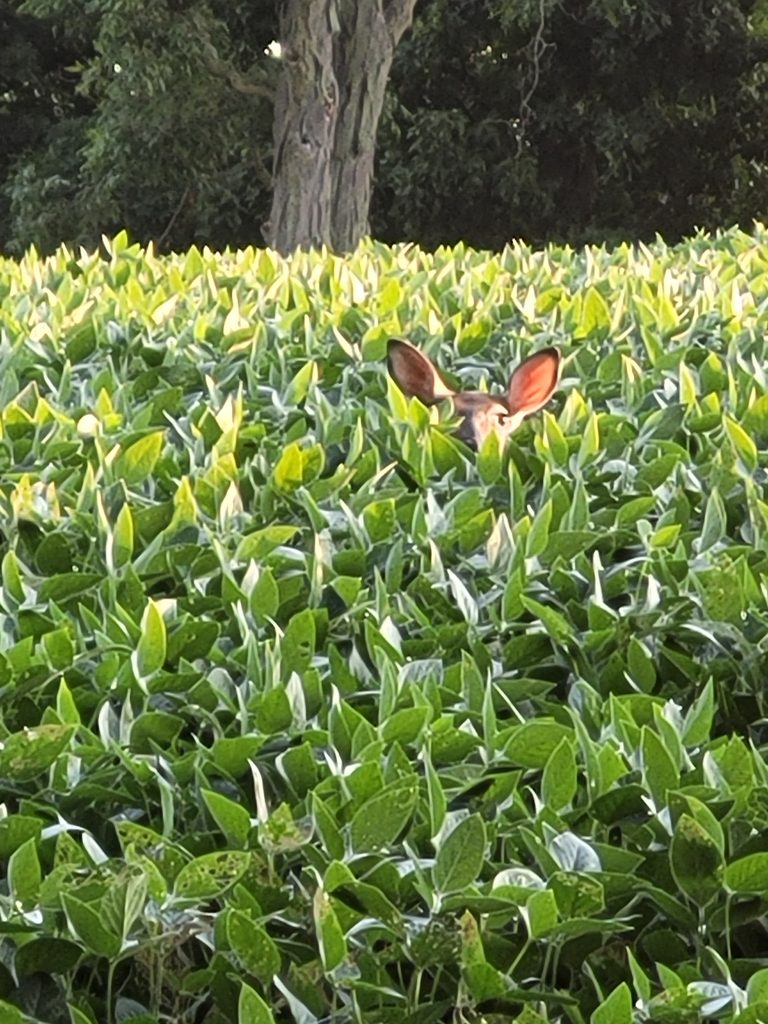
His conservation work has attracted more turkeys to his land as well. He said, “Five years ago, we didn’t have a turkey on the farm. The other day, we had 22 of them walking across the field.” Like deer, turkeys can also cause occasional damage to cash crops. He said, “Last spring when the crops were coming up, I wondered why my corn looked so bad, and you could go over there and see where the turkey had dug the kernels out of the ground, and they went right down the rows. So, I went back and replanted that back to beans instead of corn.” Al also serves on the board of the Henry County SWCD, and he frequently volunteers his farm as a site for their events. They have also hosted 4H groups and Boy Scouts. He said, “We try to get the youth involved. I’ve had some high school boys who I’ve hired a couple times to come work, and I think they enjoyed it. They came back.” He estimates they have had 20 different groups come out with local photographers for family photos or senior pictures just in
the last year. He said, “My wife says I’ve got the place looking like a state park. I want it to be functional, but aesthetic… make it look neat. And that way you can also help control the invasives.”
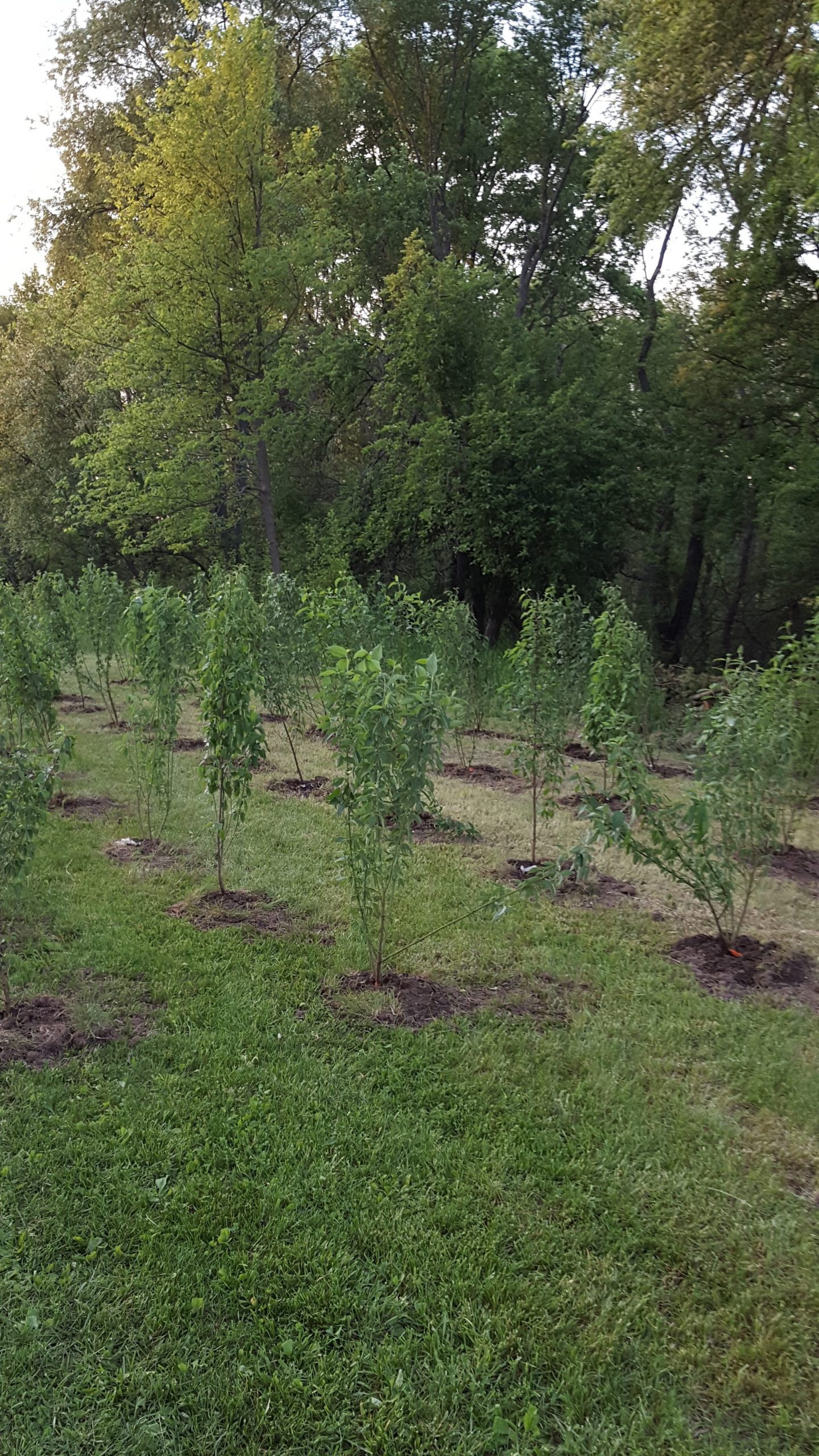
He tries to encourage other farmers who have ground that isn’t suitable for row crops to adopt some of these practices. He said, “My one neighbor is big in Pheasants Forever, and he’s got the food plots and the prairie grass, and he does a lot of it. So that kind of helps having a couple in the neighborhood, so you can kind of maintain the wildlife. There’s not a lot of animals around, so we kind of have to take care of them.”
Last summer, Al received the 2024 Outstanding Forestry Contribution Award f rom the Association of Illinois Soil and Water Conservation Districts (AISWCD). Describing his reaction to receiving the award, he said, “I was shocked and pretty honored. Steve Felt started out as my Forester, and now it’s Luke Koett. Both have been very helpful, very knowledgeable. I guess Luke helped me get the Forestry award… I was honored. I felt—man, this makes it all worthwhile.”
If you have completed a CRP plan and want to be featured in the AIM Newsletter, please reach out to Soil Health Associate Hannah Tomlin at Hannah.Tomlin@illinoisgov.
This article was original printed in the March 2025 issue of the AIM Newsletter. Read the newsletter in full here.

